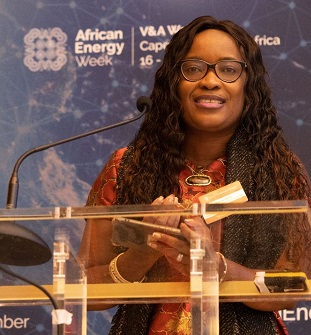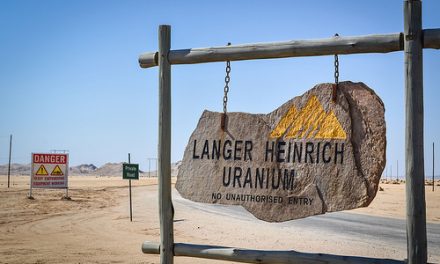
“Hydrogen production represents a US$100-billion opportunity for Africa in the next decade” – Mnyupe

Presidential Economic Advisor and Namibia’s Green Hydrogen Commissioner, James Mnyupe, who took part in the Invest in African Energy New Year reception last week, said that hydrogen creates an opportunity for Africa like no other.
Mnyupe also noted that hydrogen production represents a “US$100-billion opportunity for Africa in the next decade.”
According to him, they have put together a blended financing infrastructure platform – possibly the first of its kind in Africa. “We are going to build a one-billion-dollar fund that will be investing in all pieces of hydrogen infrastructure – pipelines, transmission lines, and so forth,” Mnyupe noted, in a bid to incentivize investors.
He made these comments at the Invest in African Energy 2023 reception, where Namibia showcased investment opportunities in its Kudu gas field, exploring the highly prospective Orange Basin and developing cost-competitive green hydrogen. The Invest in African Energy reception this year was hosted in London by the African Energy Chamber.
In a statement, Energy Capital & Power said Namibia is expected to become a leading player and regional hydrogen ecosystem, with competitive production costs – estimated as low as two dollars per kilogram – that make it an attractive partner for energy-hungry countries amid the energy transition.
“The emerging producer is uniquely implementing an integrated hydrocarbon strategy that seeks to achieve first oil while prioritizing the global energy transition and a diversified energy matrix, with two sister discoveries in 2022 positioning the country at the forefront of Africa’s upstream revival,” reads the statement by Energy Capital & Power.
According to Energy Capital & Power, as a result of hydrogen production, Namibia could boost its GDP by US$15-20 billion per year, create over 100,000 domestic jobs, export 14 GW of clean power to the Southern African Power Pool and reduce GHG emissions by 45 to 60 million tons of carbon dioxide equivalent per year by 2040.
Meanwhile, the Kudu Conventional Gas Field, operated by BW Kudu and currently in its feed stage, has a commercial production set to start in 2024. “Comprising nearly 600 billion cubic feet of natural gas reserves, the development is expected to reach peak production of 64 million cubic feet per day. Exemplifying Namibia’s integrated energy strategy, the project not only leverages existing infrastructure and targets regional energy security, but also supports energy transition solutions and provides for baseload power enabling renewable energy IPPs,” continued the Energy Capital & Power statement.
Maggy Shino, the Petroleum Commissioner of Namibia’s Ministry of Mines and Energy, said at the New Year reception that the beauty of Namibia [is that it] will give you the opportunity of a lifetime.
“Kudu is the only field able to give you the solutions that you need. The product is ready,” Shino told investors during her presentation, delivered under the theme, Namibia: Beyond Venus and Graff. “It will give you a clean energy solution amid the energy transition,” she added.
“Home to co-located onshore solar and wind power potential, as well as abundant platinum group metals, Namibia plans to utilize hydrogen as a building block for associated downstream industries and by-products, including ammonia, methane, and jet-fuel,” they concluded.
 Maggy Shino, Petroleum Commissioner of Namibia’s Ministry of Mines and Energy during the Invest in African Energy event in London on 26 January.
Maggy Shino, Petroleum Commissioner of Namibia’s Ministry of Mines and Energy during the Invest in African Energy event in London on 26 January.










































